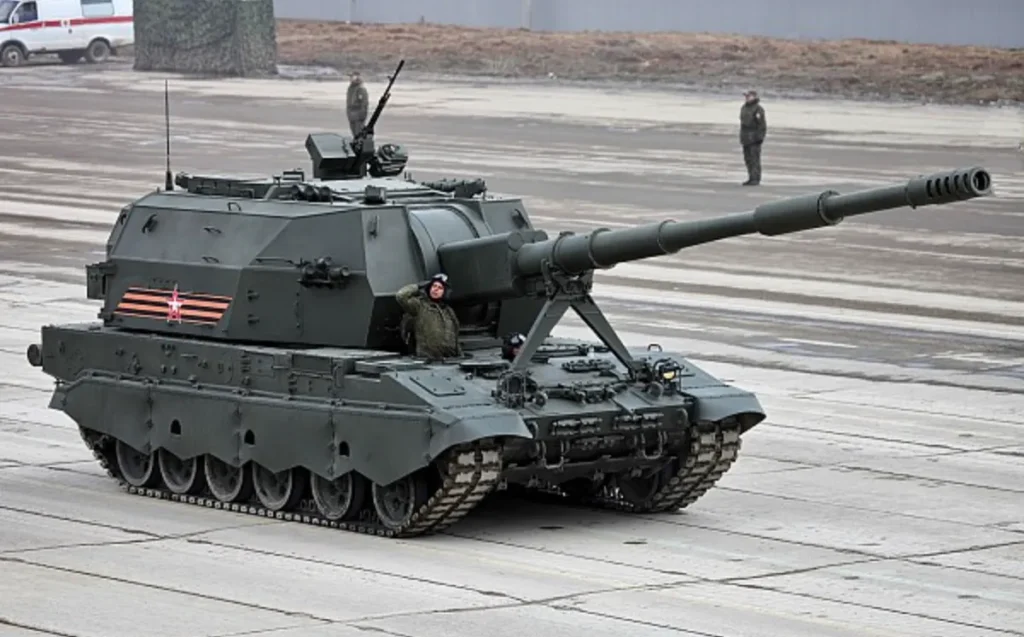Follow Us:

Share
Vietnam Replaces Soviet Artillery with K9 Thunder in a move that could shake the balance of military influence in Southeast Asia. Vietnam appears poised to turn its back on decades of reliance on Russian military technology.
Reports indicate that the country is close to finalizing a $300 million deal with South Korea to acquire approximately two dozen K9 Thunder self-propelled howitzers. This decision marks a significant shift, as Vietnam replaces Soviet artillery with K9 Thunder, highlighting its growing interest in modernizing its military hardware.
For decades, Vietnam has been one of Russia’s most steadfast military allies, relying heavily on Soviet-era artillery and weaponry to underpin its defense strategy.
However, replacing these aging systems with the cutting-edge K9 Thunder represents a direct challenge to Russia’s long-standing role as a dominant arms supplier in Southeast Asia.
But why now? And what does this decision mean not just for Vietnam, but for Russia and the future of military partnerships in the region? With this deal, Vietnam is signaling a potential pivot away from Moscow—a move with profound implications for geopolitics, military alliances, and Russia’s waning influence on the global arms market.

The K9 Thunder, a 155mm self-propelled howitzer designed by South Korea’s Hanwha Defense, is celebrated for its exceptional precision, powerful firepower, and impressive mobility.
Capable of delivering accurate strikes at distances exceeding 40 kilometers, it incorporates an advanced “Shoot and Scoot” feature, enabling rapid-fire operations followed by swift repositioning to evade enemy counter-attacks. These advanced attributes position the K9 Thunder as a critical enhancement for any military force seeking to modernize its artillery capabilities.
Internationally, the K9 Thunder has garnered significant popularity, with over 600 units exported to nations such as India, Turkey, Poland, Norway, Finland, Estonia, and Australia. Its widespread adoption highlights its proven performance and dependability as a state-of-the-art artillery platform.
By acquiring this advanced system, Vietnam is not only elevating its military power but also aligning itself with a growing list of countries that have turned to South Korea for cutting-edge defense solutions.
Is this the beginning of the end for Russia’s dominance in Southeast Asia’s defense sector? Or is it a wake-up call for Moscow to reassess its strategies in retaining allies in an increasingly competitive global arms race?
Vietnam’s decision to replace Soviet-era artillery with South Korea’s K9 Thunder delivers a sharp blow to Russia’s influence in Southeast Asia. This signalled a series of troubling implications for Moscow on multiple fronts.

For decades, Russia has relied on arms exports to maintain influence over allies like Vietnam. This move undermines that strategy.
By turning to South Korea, Vietnam not only reduces its dependence on Russian weaponry but also distances itself from Moscow’s orbit, opting instead to align closer to nations that offer advanced, reliable systems.
This transition reflects a broader global trend: traditional allies are rethinking their relationships with Russia in light of more competitive and technologically superior alternatives.
The economic impact is equally significant. Arms exports are a critical component of Russia’s defense industry, and losing a longstanding customer like Vietnam threatens the financial stability of this sector.
Read also: 2S7 Pion Artillery – Russia’s Most Powerful Self-Propelled Gun
Beyond the immediate loss of revenue, Russia stands to lose further income from maintenance contracts, spare parts, and future upgrades that come with supplying artillery systems.
This deal with South Korea effectively ends Russia’s ability to monetize Vietnam’s artillery modernization, compounding the economic challenges facing Moscow’s defense sector.
On a broader level, this development provides a strategic advantage to NATO and its allies. By adopting the K9 Thunder—a weapon system designed and produced by a country with close ties to the West—Vietnam joins a growing list of nations moving away from Russian systems.
This transition enhances interoperability among countries favoring Western-aligned technology, potentially creating informal alliances that could challenge Russia’s military posture in the region and beyond.
This setback is part of a broader pattern of challenges for Russia’s military-industrial complex. While Moscow has focused on modernizing its artillery, as seen with systems like the 2S35 Koalitsiya-SV, it has struggled to retain its dominance in an increasingly competitive global market.

The shift also highlights the evolution of warfare: the reliance on precision strikes and contactless engagement is reshaping military doctrines worldwide. Russia’s own tactics, such as employing UAVs and counter-battery radars, underscore its adaptation to modern battlefields. However, these advancements may not be enough to counter the growing preference for Western and Asian alternatives.
Ultimately, Vietnam’s pivot to South Korea marks a critical moment in the global arms race. For Russia, it is a wake-up call that underscores the fragility of its influence over traditional allies.
If Moscow cannot innovate faster or offer competitive alternatives, it risks losing ground to nations like South Korea, which is quickly establishing itself as a leader in defense technology.
The question now is whether Russia can adapt to these shifts or whether this deal will mark the beginning of a larger trend eroding its influence in the global defense market.
Share
Defense Feeds is publication focusing on informing, engaging, and empowering the world by providing accurate information from defense technology.
Powered by Defense Feeds © 2025 – All rights reserved.